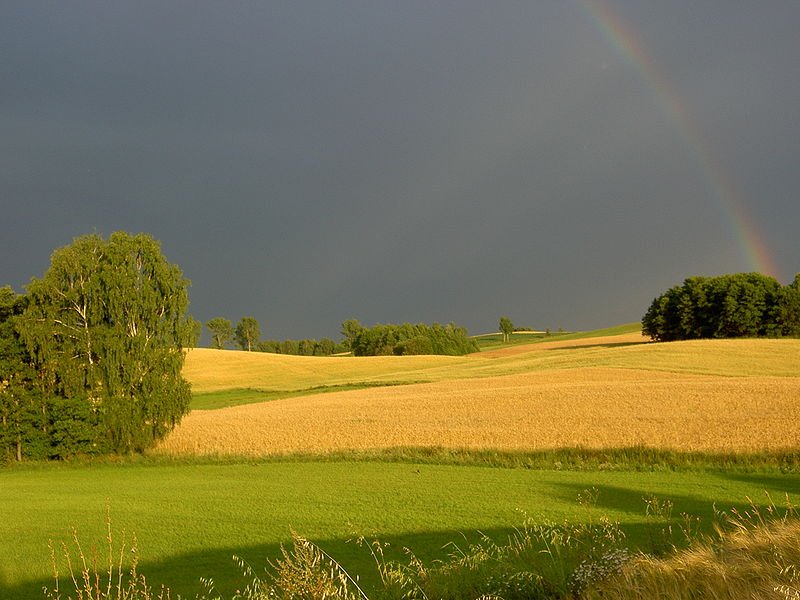 Landscape in the village of Tauroszyszki, Poland
Landscape in the village of Tauroszyszki, PolandSource: https://commons.wikimedia.org/wiki/File:Taurusi%C5%A1k%C4%97.jpg
Author: Irrka2003

Poland is one of the major countries in Central Europe. Covering 312,685 sq km (120,696 sq mi), it is the 9th biggest country in Europe and the 69th biggest in the world. The country has a population of 38 million people, making it the sixth most populous within the European Union. The capital and largest city is Warsaw. The official language is Polish.
Poland shares a border with Germany to the west, the Czech Republic to the southwest, Slovakia to the south, Ukraine to the southeast, Belarus to the east, Lithuania to the northeast, and the Russian exclave of Kaliningrad Oblast to the north. Poland also has a coastline facing the Baltic Sea to the north.
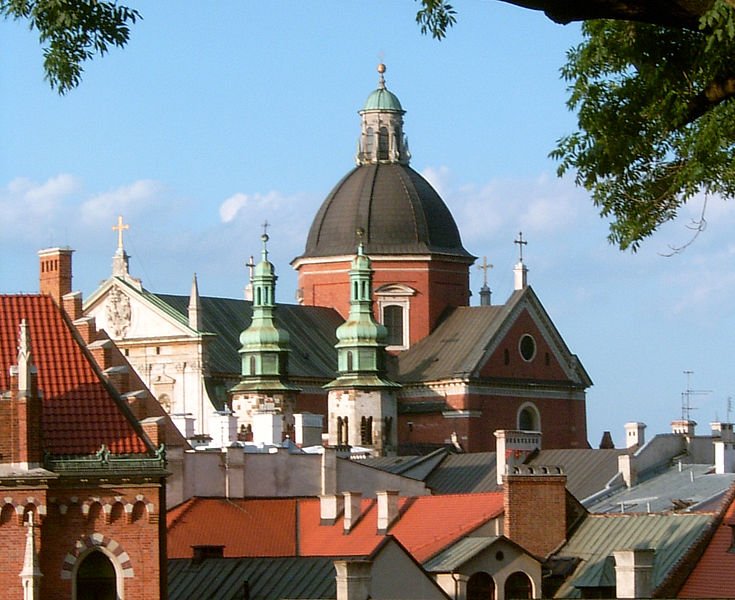 Kraków skyline
Kraków skylineSource: https://commons.wikimedia.org/wiki/File:Krakow_skyline012.jpg
Author: Rj1979

Poland observes Central European Time, which is an hour ahead of Coordinated Universal Time (UTC+1) and two hours ahead in summer. Traffic moves on the right in Poland. The phone IDD code here is +48. The official currency is the Złoty. The electricity is 230V/50Hz using European plug.
Poland is today moving towards a high-income economy. In 2010, it had a nominal GDP of $479 billion, equivalent to a per capita nominal GDP of $12,575. Its per capita GDP at purchasing power parity, estimated in 2009, was $18,705.
The history of Poland is traced back to AD 966, when its ruler Mieszko I made Christianity the state religion. The Kingdom of Poland was established in AD 1025 and in 1569, it joined Lithuania to form the Polish-Lithuanian Commonwealth. Its position between two major powers, Russia and Prussia, meant that it suffered the consequence of their belligerence. This proved true when in 1795, after Poland lost the Polish-Russian War, resulting in the country being partitioned among the Kingdom of Prussia, the Russian Empire and Austrlia, effectively erasing it from the map.
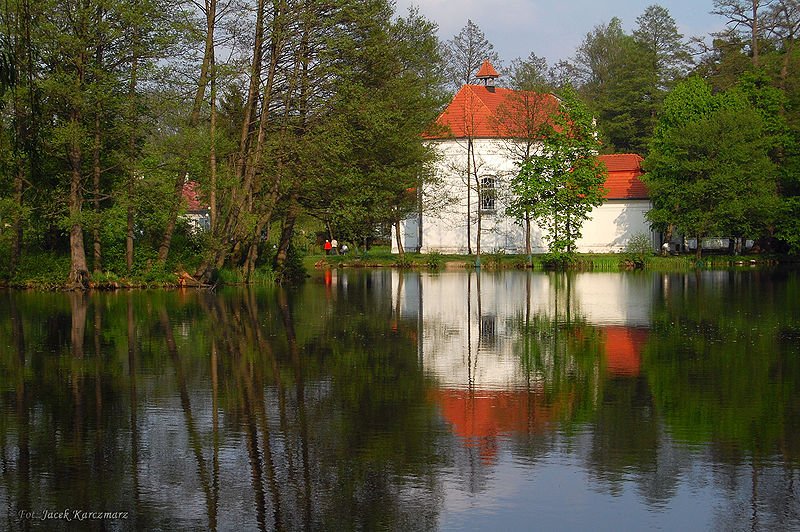 Jan Nepomucen Church in Zwierzyniec, Poland
Jan Nepomucen Church in Zwierzyniec, PolandSource: https://commons.wikimedia.org/wiki/File:Zwierzyniec_kosciol_na_wodzie01a.jpg
Author: Jacek Karczmarz

Poland reemerged when Allies forces agreed to reconstitute Poland in 1918. It even fought and won the Polish-Soviet War of 1919-1921. History seems to repeat itself during World War II, when it was invaded by Nazi Germany from the west and the Soviets from the east. Again it was split into two, the western part occupied by Germany while the eastern provinces by the Soviet Union.
At the end of World War II, Poland saw its borders shifted westward, displacing millions of Poles, German, Ukrainian and Jews. It was also 20% smaller than before. As for its population, 6 million died accounting for one-fifth of its population, more than any other country, half of whom Polish Jews. Its population would not reach its pre-war levels until the 1970's.
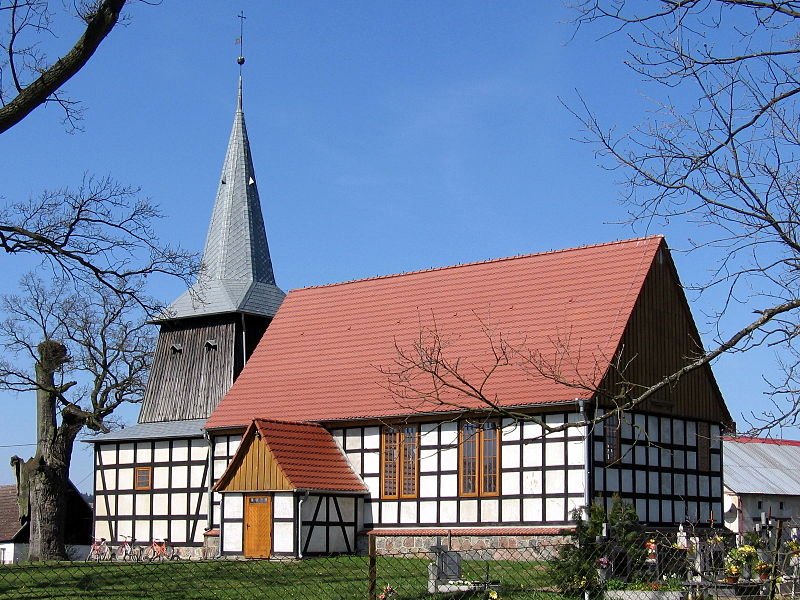 Roman Catholic Church in Świeszewo, Poland
Roman Catholic Church in Świeszewo, PolandSource: https://commons.wikimedia.org/wiki/File:Swieszewo_Church_2009a.jpg
Author: JDavid

In the post-war years, the Soviet Union instituted a communist government on Poland. Except for brief periods in 1956 and again in the 1970's, the Polish people lived under communist oppression with their personal freedom curtailed. By the 1980's, hardship and labor turmoil led to the formation of the "Solidarity" movement, which became a strong political force despite persecution, intimidation and martial law.
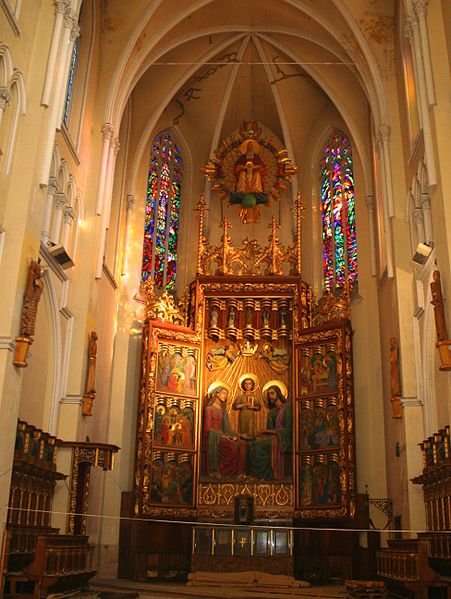 Interior of Częstochowa Cathedral, Poland
Interior of Częstochowa Cathedral, PolandSource: https://commons.wikimedia.org/wiki/File:Cz%C4%99stochowa_Archikatedra_o%C5%82tarz_p.jpg
Author: Przykuta

With the collapse of communism across Eastern Europe, Poland transformed from a socialist-style planned economy into a market economy. After an initial slump, the Polish economy reenergized to reach its pre-1989 GDP levels by 1995. It joined NATO in 1999, the European Union on 1 May 2004, and the Schengen Area in 2007.
Planning your visit to Poland
Being a member of the Schengen Agreement, Poland only require visitors from the EU and EFTA countries to bring an approved ID to visit. As of January 2011, you do not need a visa for entering Poland or any other Schengen member country if you are a citizen of Albania, Andorra, Antigua and Barbuda, Argentina, Australia, Bahamas, Barbados, Bosnia and Herzegovina, Brazil, Brunei, Canada, Chile, Costa Rica, Croatia, El Salvador, Guatemala, Honduras, Hong Kong, Israel, Japan, Macau, Malaysia, Mauritius, Mexico, Monaco, New Zealand, Nicaragua, Panama, Paraguay, Saint Kitts and Nevis, San Marino, Seychelles, Singapore, South Korea, Taiwan, United States, Uruguay, Vatican City, and Venezuela.The main international airport is in Warsaw, however there are also airports in Kraków, Katowice, Gdańsk, among others. The national carrier for Poland is LOT Polish Airlines. You can get direct flights from most major European cities to Warsaw, which also get flights from North America and Eastern Europe.
You can also take the train to Warsaw from Amsterdam, Berlin, Vilnius, Kiev, Vienna, Prague and Moscow.
Preparing Money for your trip to Poland
The currency used in Poland is the Polish Zloty (PLN).Major Cities in Poland
Places of Interest in Poland
- Bory Tucholskie National Park
- Kalwaria Zebrzydowska
- Karkonoski National Park
- Malbork
- Słowiński National Park
- Wieliczka Salt Mine
- Wielkopolski national Park
 Latest updates on Penang Travel Tips
Latest updates on Penang Travel Tips
 Discover with Timothy YouTube Channel
Discover with Timothy YouTube Channel
 PG Food Channel
PG Food Channel
 Learn Penang Hokkien YouTube Channel
Learn Penang Hokkien YouTube Channel
 SojiMart Videos
SojiMart Videos
Latest from Discover with Timothy: Gurney Bay - what to see and do there
About this website

Hello and thanks for reading this page. My name is Timothy and my hobby is in describing places so that I can share the information with the general public. My website has become the go to site for a lot of people including students, teachers, journalists, etc. whenever they seek information on places, particularly those in Malaysia and Singapore. I have been doing this since 5 January 2003, for over twenty years already. You can read about me at Discover Timothy. By now I have compiled information on thousands of places, mostly in Peninsular Malaysia and Singapore, and I continue to add more almost every day. My goal is to describe every street in every town in Malaysia and Singapore.
Robbie's Roadmap
- Episode 1: Robbie's Journey to Financial Freedom
- Episode 2: Lost in America
- Episode 3: The Value of Money
- Episode 4: The Mentor
- Episode 5: The Thing that Makes Money
- Episode 6: The walk with a Billionaire
- Episode 7: The Financial Freedom Awakening
- Episode 8: Meet Mr Washington
- Episode 9: The Pizzeria Incident
Copyright © 2003-2024 Timothy Tye. All Rights Reserved.


 Go Back
Go Back